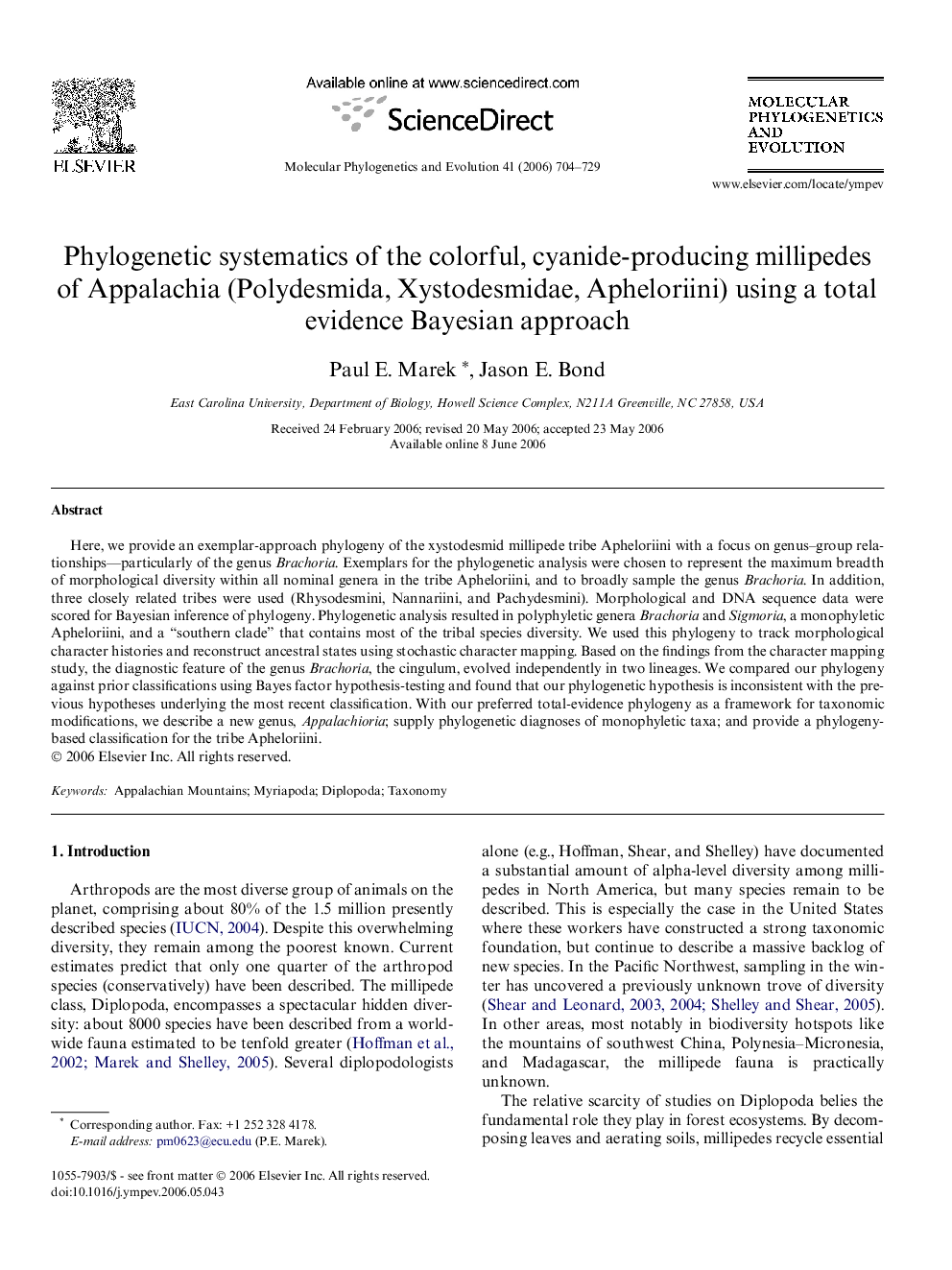| Article ID | Journal | Published Year | Pages | File Type |
|---|---|---|---|---|
| 2835817 | Molecular Phylogenetics and Evolution | 2006 | 26 Pages |
Here, we provide an exemplar-approach phylogeny of the xystodesmid millipede tribe Apheloriini with a focus on genus–group relationships—particularly of the genus Brachoria. Exemplars for the phylogenetic analysis were chosen to represent the maximum breadth of morphological diversity within all nominal genera in the tribe Apheloriini, and to broadly sample the genus Brachoria. In addition, three closely related tribes were used (Rhysodesmini, Nannariini, and Pachydesmini). Morphological and DNA sequence data were scored for Bayesian inference of phylogeny. Phylogenetic analysis resulted in polyphyletic genera Brachoria and Sigmoria, a monophyletic Apheloriini, and a “southern clade” that contains most of the tribal species diversity. We used this phylogeny to track morphological character histories and reconstruct ancestral states using stochastic character mapping. Based on the findings from the character mapping study, the diagnostic feature of the genus Brachoria, the cingulum, evolved independently in two lineages. We compared our phylogeny against prior classifications using Bayes factor hypothesis-testing and found that our phylogenetic hypothesis is inconsistent with the previous hypotheses underlying the most recent classification. With our preferred total-evidence phylogeny as a framework for taxonomic modifications, we describe a new genus, Appalachioria; supply phylogenetic diagnoses of monophyletic taxa; and provide a phylogeny-based classification for the tribe Apheloriini.
